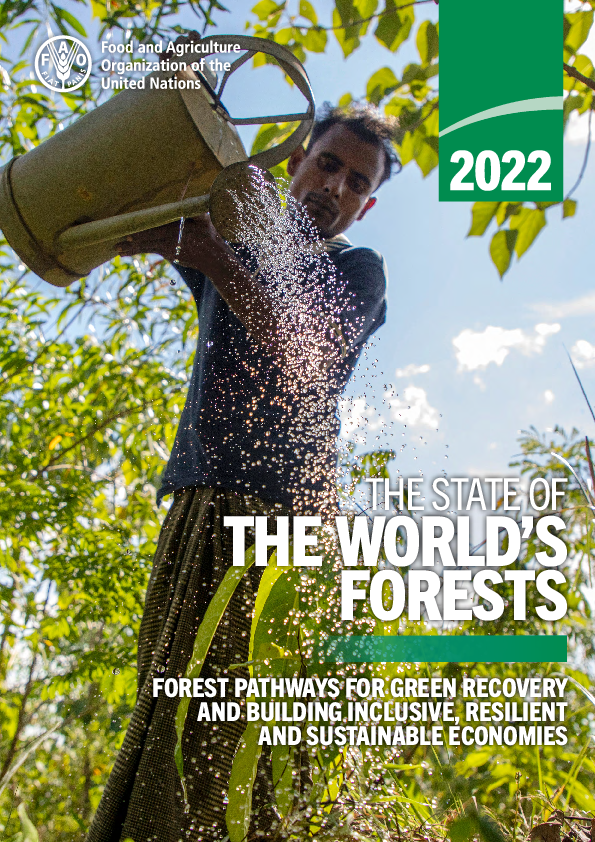 Read this article in French
Read this article in French- Share this article
- Subscribe to our newsletter
State of the World’s Forests Report 2022
The latest State of the World’s Forests Report (SOFO) subtitled Forest Pathways for Green Recovery and Building Inclusive, Resilient and Sustainable Economies was launched by the Food and Agriculture Organization of the United Nations (FAO) at the XV World Forestry Congress in May 2022.
With the world facing multiple crises, including COVID-19, conflicts, climate crisis and biodiversity loss, our forests can help us recover from their impact, but only if we step-up action to unlock their potential. The report sets out three pathways for doing that: halting deforestation; restoring degraded land and expanding agroforestry, and sustainably using forests and building green value chains.
The key arguments of the report are that:
- Halting deforestation and maintaining forests could avoid emitting around 3.6 gigatonnes of carbon dioxide equivalent (GtCO2e) per year between 2020 and 2050, including about 14 per cent of what is needed up to 2030 to keep planetary warming below 1.5 °C, while safeguarding more than half the Earth’s terrestrial biodiversity.
- Restoring degraded lands and expanding agroforestry – 1.5 billion hectares of degraded land would benefit from restoration, and increasing tree cover could boost agricultural productivity on another 1 billion hectares. Restoring degraded land through afforestation and reforestation could cost-effectively take up to 1.5 GtCO2e per year out of the atmosphere between 2020 and 2050, similar to taking up to 325 million gasoline-powered passenger cars off the road each year.
- Sustainably using forests and building green value chains would help meet future demand for materials – with global consumption of all natural resources expected to more than double from 92 billion tonnes 2017 to 190 billion tonnes in 2060 – and underpin sustainable economies with greater employment opportunities and more secure livelihoods.
Current investment in forests falls way short of what is required. According to one estimate, total financing for the forest pathways needs to increase threefold by 2030 and fourfold by 2050 for the world to meet climate, biodiversity and land degradation neutrality targets, with the estimated required finance for forest establishment and management alone amounting to USD 203 billion per year by 2050.
The report cites a wide range of examples from around the globe, both demonstrating the vital importance of forests and trees to people’s livelihoods and pointing to supportive policy initiatives - from the key role of non-wood forest products in Turkey and wood fuel in Georgia, to smallholder forestry in China and Vietnam, sustainable charcoal in Côte d’Ivoire and formalising land rights in Colombia.
(FAO/ile)
Read more and download the report at FAO website





Add a comment
Be the First to Comment